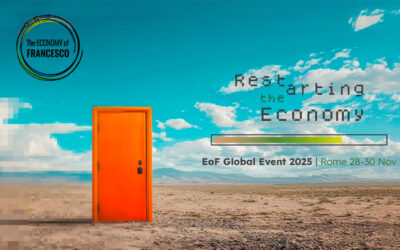Continued from: The Adventure of Unity: The beginnings /1
 In the next few months, Chiara drew many young people around her. Some of them wanted to follow her in her path: Natalia Dallapiccola was the first, then Doriana Zamboni and Giosi Guella, Graziella De Luca and the sisters, Gisella and Ginetta Calliari; another pair of sisters were the Ronchettis, Valeria and Angelella, Bruna Tomasi, Marilen Holzhauser and Aletta Salizzoni. . . And all of this was happening while the way of the focolare was anything but defined, except for the “absolute Gospel radicalism” of Chiara.
In the next few months, Chiara drew many young people around her. Some of them wanted to follow her in her path: Natalia Dallapiccola was the first, then Doriana Zamboni and Giosi Guella, Graziella De Luca and the sisters, Gisella and Ginetta Calliari; another pair of sisters were the Ronchettis, Valeria and Angelella, Bruna Tomasi, Marilen Holzhauser and Aletta Salizzoni. . . And all of this was happening while the way of the focolare was anything but defined, except for the “absolute Gospel radicalism” of Chiara.
In those months the war was waging in Trent, bringing ruin, misery, and death. Chiara and her new companions were in the habit of meeting in the air-raid shelters during air attacks. They had a great desire to come together and to put the Gospel into practice, following the overwhelming intuition that had led them to place God-Love at the centre of their life. “Each event touched us so deeply,” Chiara would later say. “The lesson that God was offering to us through the circumstances around us was quite clear: Everything is vanity of vanities, everything passes away. But, contemporaneously, God placed a question in my heart, which was for all of us. And He also provided the answer: ‘But could there be an ideal that doesn’t die, that no bomb can crumble and to which we can give ourselves?’ Yes: God. We decided to make God the ideal of our life.”

One day, in the darkened cellar underneath the home of Natalia Dallapiccola, they were reading the Gospel by the light of candle, as was their custom by now. They opened it by chance to the chapter containing the prayer of Jesus before his death: “Father, that all be one” (Jn 17:21). It’s an extraordinary but complex passage of the Gospel, which has been studied by scholars and theologians throughout the Christian world; but in those days it was a bit forgotten because it was so mysterious. And then there was that word “unity” which had become part of the Communists’ vocabulary, who, in a certain sense, had claimed a monopoly on it. “But, for them, those words seemed to become illuminated, one by one,” Chiara writes, “and they placed within our hearts the conviction that we had been born for ‘this’ page of the Gospel.”
A few months earlier, on the 24th of January, a priest had asked Chiara: “Do you know what the greatest suffering of Jesus was?” In keeping with the mentality of the time, Chiara responded: “His suffering in the Garden of Olives.” But the priest corrected her: “No, Jesus suffered most when he was on the cross and cried out: “My God, my God, why have you abandoned me?”(Mt 27:46)”. Struck by his words, as soon as she was alone with her friend, Doriana, she said: “We only have one life, we’ll follow Jesus abandoned.” From that moment on he would be Chiara’s only spouse in life.
 Meanwhile the unrest caused by the war didn’t let up. The families of most of the girls fled to the mountain valleys. But the girls decided to remain in Trent: some because of work or study; some, like Chiara, in order not to abandon the many people who had begun to gather around them. Chiara stayed with an acquaintance until the following September when she found a flat at Number Two Piazza Cappuccini on the outskirts of Trent. This is where some of her new friends – first Natalia Dallapiccola, then the others, began living together. It was the first focolare: a modest two-room apartment in the clearing shaded by trees at the foot of the Capuchin church. They called it simply “the little house”.
Meanwhile the unrest caused by the war didn’t let up. The families of most of the girls fled to the mountain valleys. But the girls decided to remain in Trent: some because of work or study; some, like Chiara, in order not to abandon the many people who had begun to gather around them. Chiara stayed with an acquaintance until the following September when she found a flat at Number Two Piazza Cappuccini on the outskirts of Trent. This is where some of her new friends – first Natalia Dallapiccola, then the others, began living together. It was the first focolare: a modest two-room apartment in the clearing shaded by trees at the foot of the Capuchin church. They called it simply “the little house”.




0 Comments